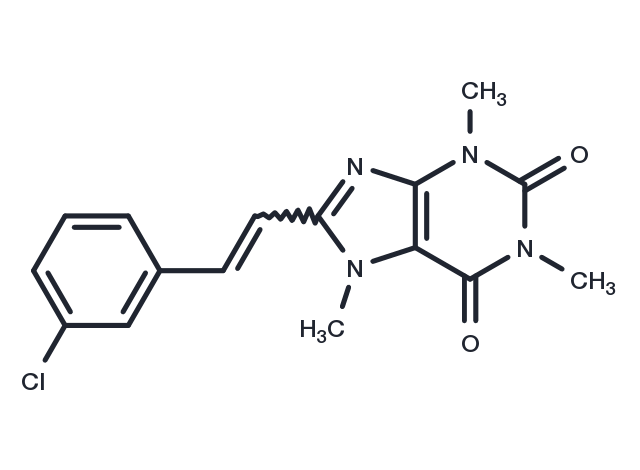Powder: -20°C for 3 years | In solvent: -80°C for 1 year


8-CSC is a dual agent endowed with good hMAO-B inhibitory activity (Ki: 235 nM in baboon liver mitochondria) and A2A affinity (Ki: 36 nM in rat brain striatal membranes receptor).

| Pack Size | Availability | Price/USD | Quantity |
|---|---|---|---|
| 25 mg | 6-8 weeks | $ 1,520.00 | |
| 50 mg | 6-8 weeks | $ 1,980.00 | |
| 100 mg | 6-8 weeks | $ 2,500.00 |
| Description | 8-CSC is a dual agent endowed with good hMAO-B inhibitory activity (Ki: 235 nM in baboon liver mitochondria) and A2A affinity (Ki: 36 nM in rat brain striatal membranes receptor). |
| Synonyms | 8 CSC, CSC |
| Molecular Weight | 330.77 |
| Formula | C16H15ClN4O2 |
| CAS No. | 148589-13-3 |
Powder: -20°C for 3 years | In solvent: -80°C for 1 year
You can also refer to dose conversion for different animals. More
bottom
Please see Inhibitor Handling Instructions for more frequently ask questions. Topics include: how to prepare stock solutions, how to store products, and cautions on cell-based assays & animal experiments, etc.
8-CSC 148589-13-3 8CSC 8 CSC CSC inhibitor inhibit
